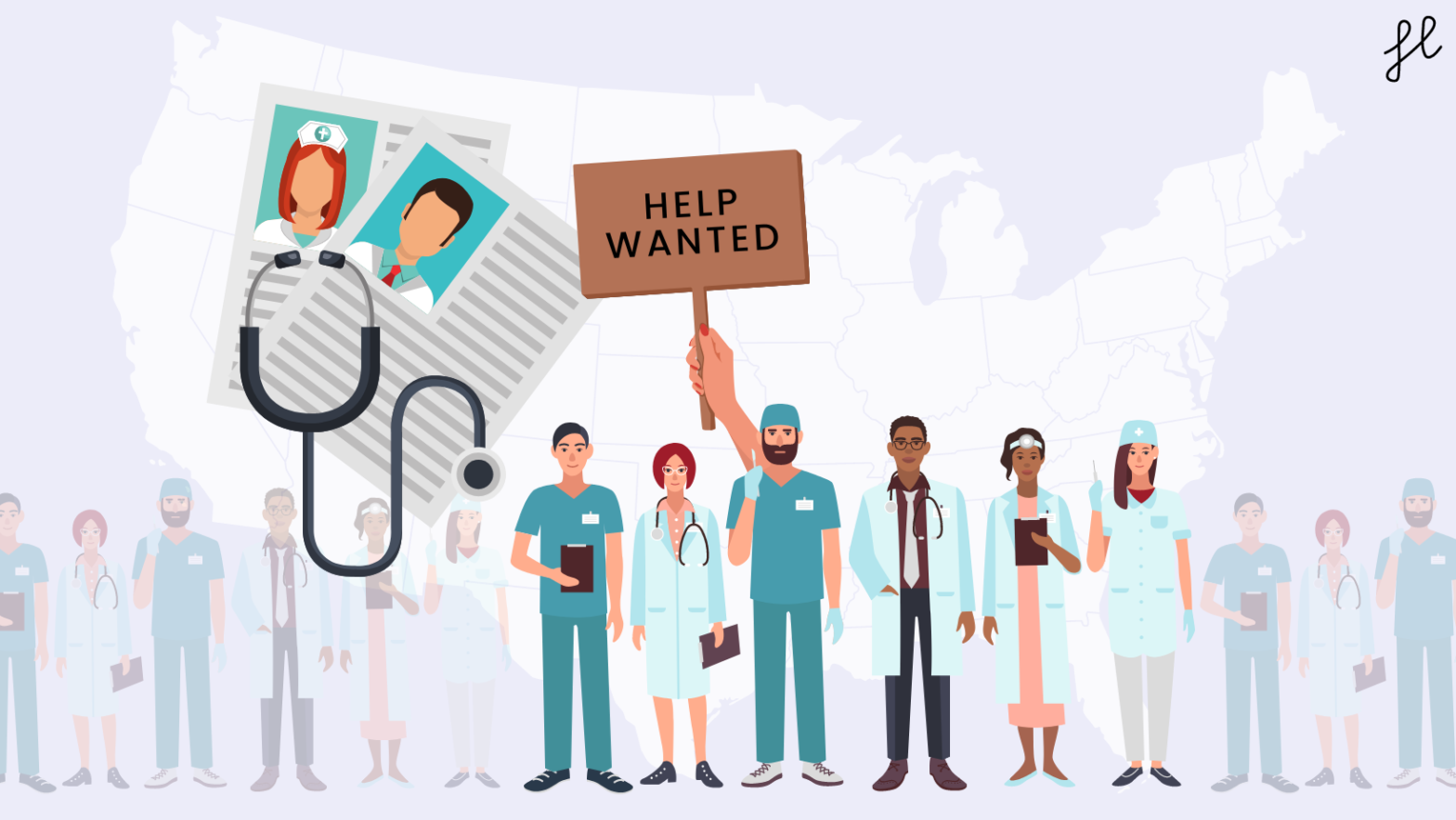The shortage of doctors and nurses is a major issue facing society as a whole. And it’s been piling up since long before COVID-19 hit. Infections contracted in hospitals, patient falls, and mortality rates all rise when healthcare facilities are understaffed, according to the American Association of Colleges of Nursing.
In this post, we will look at the issue of healthcare staffing in the U.S., the reasons why this is happening, and how this issue can be resolved.
Why Is There a Healthcare Staffing Shortage?
For decades, those working in health care have been warning about a looming shortage of qualified workers. A perfect storm of issues has all come together to make things very difficult for the industry.
Here are some of the reasons why.
1. Stress And Burnout
This is a common problem among those who work in healthcare. Ineffectiveness due to burnout has been linked to medical mistakes. In addition, it might lead caregivers to experience emotions of guilt and shame.
The pandemic worsened clinical staff burnout. Fewer than a third of physicians in 2019 felt burned out, according to a survey published in the Journal of the American Medical Association. By the year 2022, that percentage had climbed to a full 40%. In 2019, about 41% of people felt burned out; by 2022, that number had risen to just over 49%.
In a poll conducted by Incredible Health, 34% of nurses reported that they planned to leave the profession by the end of 2022, with 44% citing stress and burnout as reasons for their departure.
2. Aging Population
The percentage of people 65 and older in the United States was 16.8% in 2021, and the Census Bureau projects that it will rise to 21% by 2030. Most patients in healthcare facilities, such as hospitals and nursing homes, are over 65 years old. They have a higher prevalence of disorders requiring medical attention, such as diabetes, arthritis, heart disease, and dementia.
3. Migration On a Global Scale
Hiring people from foreign nations has helped wealthy countries alleviate their labour shortages. However, they exacerbate shortages in workers’ home countries by offering financial incentives for healthcare professionals to relocate. Since low-income nations can’t compete economically in the job market, skilled workers must look elsewhere to support their families.
4. Insufficient Number of Qualified Nurses
The American Association of Colleges of Nurses reported that a lack of qualified nursing professors exacerbates the nursing shortage. In 2019-2020, 80,407 would-be nursing students were rejected due to a scarcity of available spots at nursing schools.
Pay for faculty members is typically inadequate, making it difficult to hire highly competent individuals. Due to a lack of initial capacity, the nursing profession is struggling to meet expanding demand.
5. Pedagogical Measures
A significant problem, especially in low-income nations, is the absence of investment in training healthcare personnel. The United States, despite its richness, has a nursing faculty shortage that limits the number of students who may enroll in nursing school.
Strategies Used to Fill the Gap of Healthcare Staffing
For some time now, hospitals and other medical centers have been functioning in a crisis mode. In order to address pressing requirements, they must quickly address the shortage of available professionals.
Here are some of the short-term and long-term strategies used in the healthcare industry to address the gap in healthcare staffing in the U.S.
- Hospitals are examining various strategies to draw in and retain healthcare staff. This entails going above and beyond signing incentives and lucrative wages. Employees can desire flexible scheduling and a positive workplace environment.
- Workplace engagement and satisfaction. Employees are seeking chances to be recognized, to produce their best work, and to have a feeling of independence and ownership.
- Both scheduling and workforce planning are considered great arts. To properly staff each shift and prevent overworking workers, providers are using scheduling solutions, such as artificial intelligence (AI).
- Investing funds into public health. Investment in public health projects and programs can benefit local communities by enhancing the health of their residents and easing the strain on hospitals.
- The majority of states demand that nurse practitioners work under a doctor’s supervision. Enabling NPs to exercise full practice authority may help HPSA shortages.
- The pipeline can be filled by encouraging more people of colour to train as nurses and physicians. The quality of care provided to those groups can be improved by medical practitioners who share the same cultural background as the patients.
Conclusion
This has been the greatest obstacle faced by those working in public health. The issue of shortages in healthcare staffing is multifaceted and has a long-term influence on the healthcare sector. Even still, it must be resolved because the alternative—poor health status for patients across the country—is intolerable.
Let us stay connected in our social media accounts for more healthcare discourse. Follow us on LinkedIn, Instagram, Twitter, Pinterest, Tiktok, and Facebook now!
